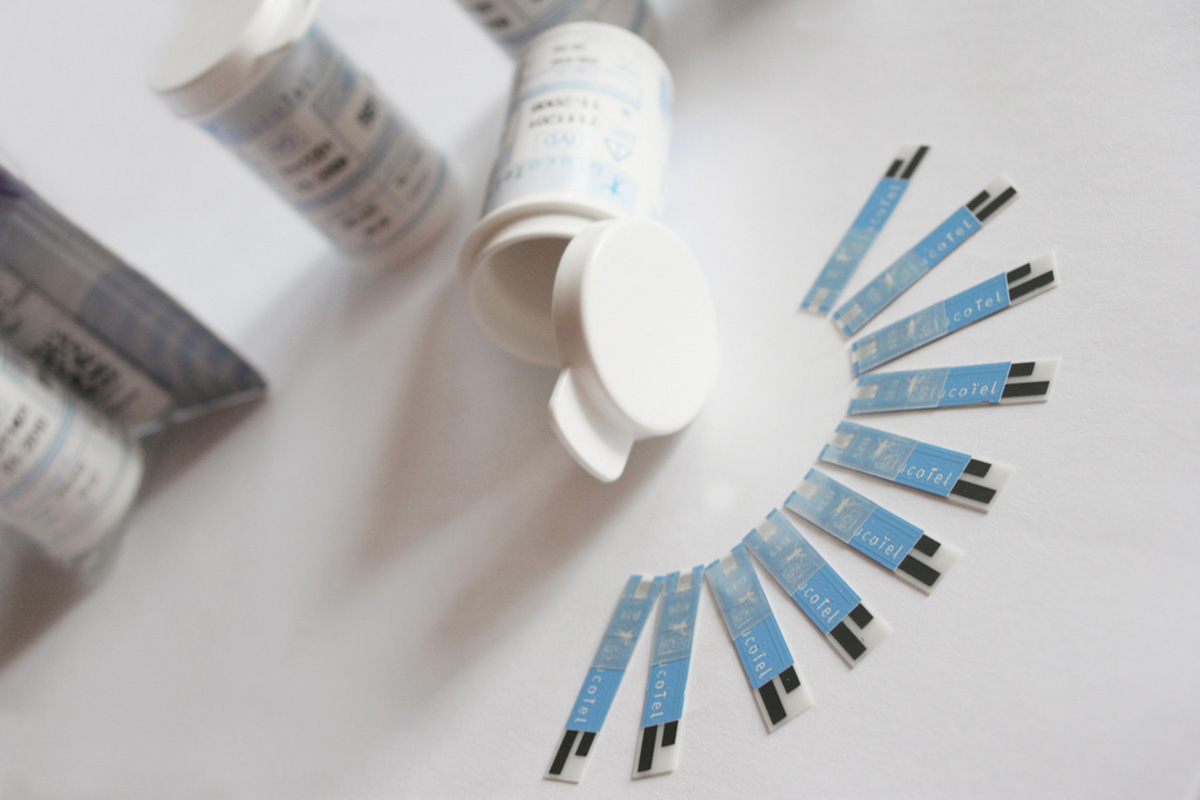Diabetes is a group of chronic disorders characterized by high levels of blood sugar (glucose) resulting from problems in how a natural hormone called insulin is produced, how insulin works, or both. Most patients are diagnosed with one of two types — type 1 diabetes or type 2 diabetes.

Type 1 diabetes, also previously known as juvenile-onset diabetes, is usually diagnosed during your mid-teens. Type 2 diabetes, also previously called adult-onset diabetes, is usually diagnosed later in life. However, both types can occur at any age, and we are seeing more people being diagnosed with type 1 diabetes in adulthood and more people being diagnosed with type 2 diabetes at a younger age. Of the two types, type 2 diabetes is much more common, accounting for up to 95 percent of all diagnosed cases of diabetes.
See Also: Diabetes Drug Now OK for Weight Loss
According to the US Centers for Disease Prevention and Control (CDC), during 2008–2009, nearly 18,500 people below age 20 years were newly diagnosed with type 1 diabetes, while around 5,000 people in the same age bracket were newly diagnosed with type 2 diabetes annually.
Symptoms Of Type 1 Diabetes
The symptoms of type 1 diabetes usually come on suddenly and manifest when your blood sugar level is higher than normal. These include:
- Extreme thirst
- Constant feeling of hunger
- Always feeling tired
- Blurred vision
- Numbness or tingling in the feet
- Losing weight in spite of increased appetite
- Urinating more often
- Irritability
- Bedwetting in children

These symptoms also occur in people who have type 2 diabetes. However, unlike type 2 diabetes, which is usually associated with obesity and poor eating habits, type 1 diabetes is usually seen in people who are of normal or below normal body weight. People who are not aware that they have type 1 diabetes and fail to get treatment may suddenly experience serious symptoms of diabetic ketoacidosis (a complication of the disease) such as:
- Deep and rapid breathing
- Flushed face
- Dry skin
- Dry mouth
- Fruity odor in the breath
- Nausea/vomiting
- Stomach pain
These symptoms usually peak before the age of 20 and the diagnosis of type 1 diabetes may be established by findings of increased fasting blood sugar levels and markedly abnormal oral glucose tolerance test results. Ketone bodies may also be found in the urine.
Type 1 Or Type 2?
After all, type 2 diabetes accounts for up to 95 percent of all cases of diabetes, especially in people over the age of 35. However, it is possible that in a few of these adults, they may actually have diabetes type 1 or LADA, another subtype of diabetes — Latent Autoimmune Diabetes in Adults, which is similar to both types of diabetes. Type 1 diabetes is usually passed on in the family, but may develop at any age. It may occur following an infection or another factor that triggers the body to mistakenly attack the pancreatic cells that produce insulin. This may cause you to develop an autoimmune disease such as type 1 diabetes at a later age.
What Causes Type 1 Diabetes?
Diabetes type 1 is an autoimmune disorder that develops when the pancreatic beta cells that produce the hormone insulin are destroyed. Destruction of these specialized cells is initiated by the immune system, resulting in a decrease or complete elimination of insulin production. This hormone is responsible for regulating blood glucose levels, which usually increase after meals. Scientists have identified that an environmental trigger such as a virus or a toxin may cause the immune system to mistakenly attack your pancreas and destroy the beta cells.
Heredity plays an important role in determining one’s likelihood of developing type 1 diabetes. Parents who carry genes for the disease may pass these on to their children, and interaction of environmental factors with these genes may trigger the onset of the disease. Viruses possibly associated with type 1 diabetes include cytomegalovirus, coxsackievirus B, adenovirus, mumps, and rubella.
Because they lack insulin, treatment for patients with type 1 diabetes relies mainly on insulin injections, which have to be given daily.
What Is Latent Autoimmune Diabetes In Adults (LADA)?
Aside from type 1 and type 2 diabetes, scientists have also identified another subtype of the disease known as latent autoimmune diabetes in adults, which accounts for 2 to 12 percent of all cases of diabetes. Most patients with LADA are diagnosed after the age of 35 and are often incorrectly diagnosed as type II diabetes. However, these patients also have autoantibodies, which are found only in type I diabetes. Hence, the condition is also called type 1.5 diabetes or latent type I diabetes. These patients are often treated with oral medications to control blood sugar levels, just like type 2 diabetes patients. However, because of poor blood sugar control, they eventually become insulin-dependent, just like those who have type I diabetes.
Diagnosis And Treatment
People who develop symptoms of diabetes (frequent urination, unusual thirst, always hungry, weak, etc.) must consult their doctors immediately to get proper diagnosis and treatment. It is important to treat diabetes early because this is a chronic disease that is associated with serious complications such as loss of vision, kidney problems, chronic infection and non-healing wounds, nerve damage, circulatory problems, and heart disease.
See Also: Big Breakfasts And Diabetes: Can A Big Breakfast Improve Blood Sugar Control?
The diagnosis of diabetes depends on laboratory findings of increased blood sugar levels, which may be tested by taking a fasting blood glucose level, an oral glucose tolerance test, and a hemoglobin A1c (A1C) test. Very high blood sugar levels may be associated with the presence of ketone bodies in the urine, which is typical of type 1 diabetes. Other tests may be done to determine if you have complications of the disease, such as high cholesterol or kidney disease.
The mainstay of treatment in type 1 diabetes is daily insulin injection. Patients are also advised to eat a healthy diet and to exercise to help control blood sugar levels.
- Medline Plus. Type 1 diabetes. http://www.nlm.nih.gov/medlineplus/ency/article/000305.htm
- CDC. National Diabetes Statistics Report, 2014. http://www.cdc.gov/diabetes/pubs/statsreport14/national-diabetes-report-web.pdf
- National Diabetes Information Clearinghouse (NDIC). Causes of Diabetes. http://diabetes.niddk.nih.gov/dm/pubs/causes/
- WJD. Latent autoimmune diabetes in adults: A distinct but heterogeneous clinical entity. http://www.ncbi.nlm.nih.gov/pmc/articles/PMC3083891/
- WebMD. Type 1 Diabetes. http://www.webmd.com/diabetes/guide/type-1-diabetesPhoto courtesy of Bodytel via Flickr: www.flickr.com/photos/bodytel/5476255676
- Photo courtesy of Stevendepolo via Flickr: www.flickr.com/photos/stevendepolo/5233546650
- www.nlm.nih.gov
- www.cdc.gov
- www.ncbi.nlm.nih.gov
- niddk.nih.gov
- www.webmd.com


Your thoughts on this